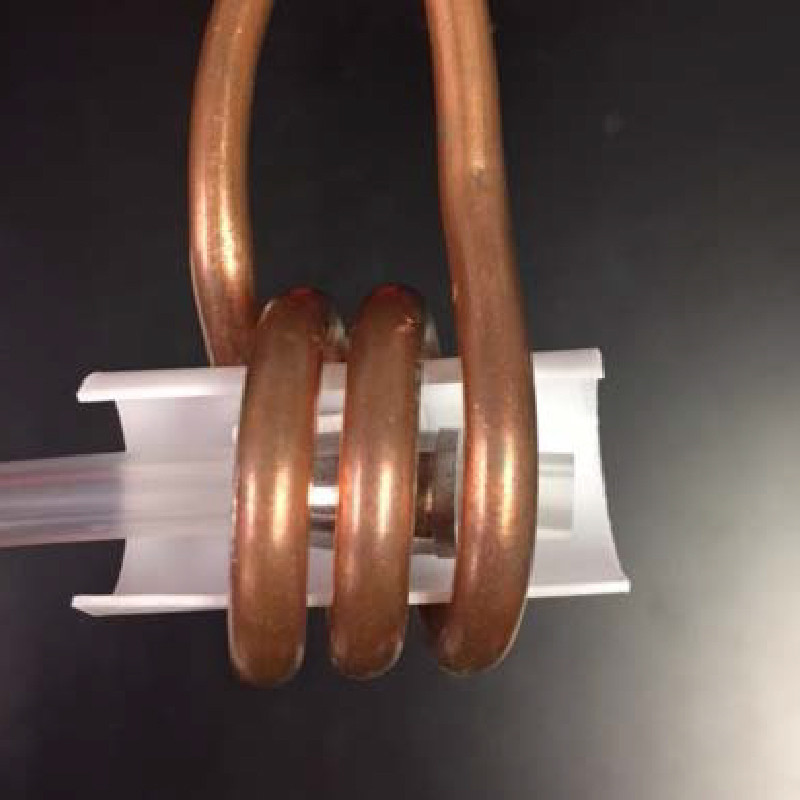

Category


Photos are for informational purposes only. View product specification
please use latin characters
Objective: To heat steel tubes for an adhesive bonding application for a medical industry part.
Frequency: 230 kHz
Material: A stainless steel tube on a plastic tube
Temperature: 392 °F (200 °C)
Initial tests were conducted to optimize the power delivered to the plastic tube assembly. Temperature indicating paint was then applied to the part, which dissolves when the part reaches the target temperature. It was observed that it took 5.0 seconds to heat the sample to temperature. After the part cooled to room temperature, it was compared to the customer-provided finished assemblies to confirm that the plastic was sufficiently bonded to the inside of the steel tube. Five assemblies were heated and the application was successfully proven out.
Are you interested in this product? Do you need additional information or individual pricing?
Objective: To heat steel tubes for an adhesive bonding application for a medical industry part.
Frequency: 230 kHz
Material: A stainless steel tube on a plastic tube
Temperature: 392 °F (200 °C)
Initial tests were conducted to optimize the power delivered to the plastic tube assembly. Temperature indicating paint was then applied to the part, which dissolves when the part reaches the target temperature. It was observed that it took 5.0 seconds to heat the sample to temperature. After the part cooled to room temperature, it was compared to the customer-provided finished assemblies to confirm that the plastic was sufficiently bonded to the inside of the steel tube. Five assemblies were heated and the application was successfully proven out.
Your review appreciation cannot be sent
Report comment
Report sent
Your report cannot be sent
Write your review
Review sent
Your review cannot be sent
